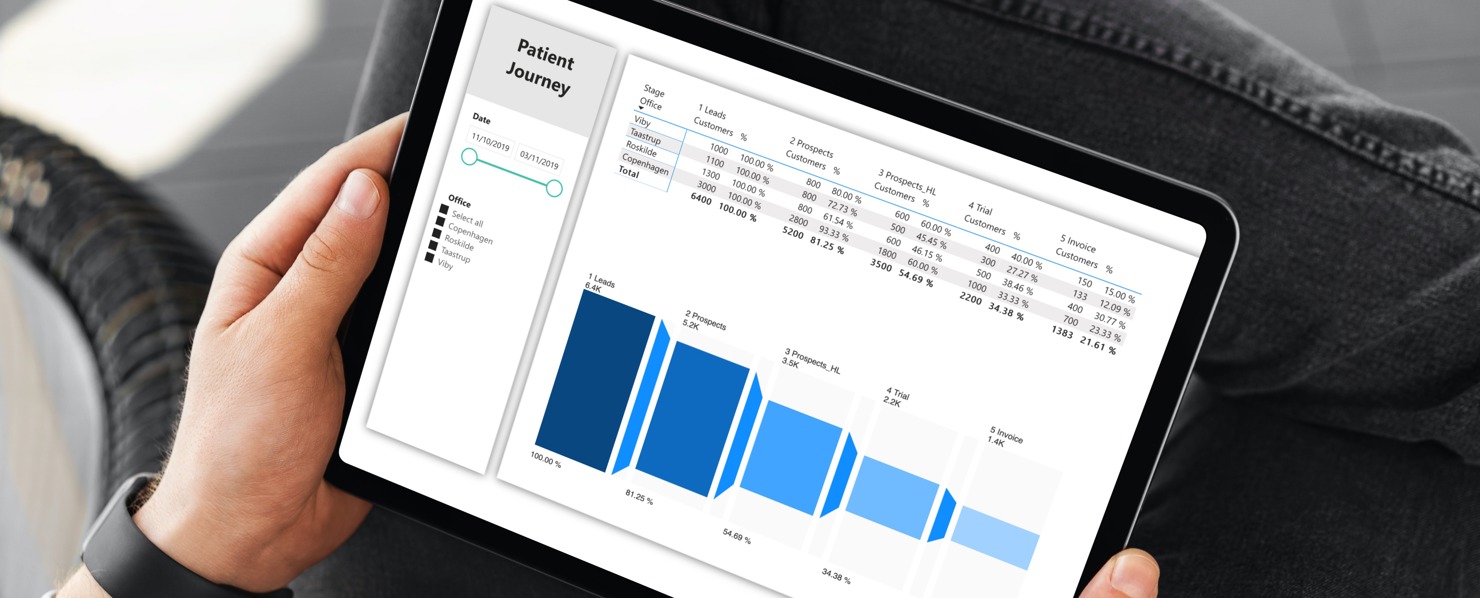
Navigating the Growing Audiology Market: How to Stand Out and Succeed

The audiology market has changed dramatically in recent years. Now, not only do audiology practices need to differentiate themselves from other nearby clinics, but there’s also considerable competition from over-the-counter (OTC) and direct-to-consumer (DTC) hearing aid sales, as well as big-box retailers (like Costco) selling hearing aids.
The good news is that the audiology industry is growing significantly, with revenue in the hearing care sector projected to hit $44.7 billion in 2024. In fact, the audiology industry has a projected annual growth rate of 5.6% from through 2027. These increases are driven by rising demands from a growing 65+ population (who are more likely to need hearing aids than younger demographics) as well as technological advancements, like direct streaming capabilities and AI-enabled devices. In other words, there are plenty of potential customers – and plenty of money to be made at your hearing clinic – so work proactively to maximize hearing aid sales.
To capture the growing demand, implement effective strategies to generate awareness about your hearing clinic, drive traffic to your practice, optimize your clinicians’ schedules, and convert prospects to customers. Also, since low conversion rates and high return rates cost your practice money, take steps to increase key metrics, including sales, conversions, and patient satisfaction.
Remember, increasing hearing aid sales not only supports the financial health of your clinic but, more importantly, it helps improve the quality of life for your patients. By focusing on device sales, you’re providing a valuable solution that meets your patients’ needs, helping them stay connected and engaged in their daily lives. A commitment to growing hearing aid sales can benefit both your clinic and the individuals you serve.
Five Key Financial Benchmarks That Help Increase Your Business Successes
1. Gross Hearing Aid Revenue as a Percentage of Gross Revenue
Since hearing aid sales generate more revenue per clinical hour than follow-up services or other product sales, between 70% and 90% of your business’s gross revenue should be generated by selling hearing aids. Clinical services like hearing tests, which may be covered by insurance, typically have lower profit margins, while hearing aid sales are much more profitable. Keep in mind that the devices aren’t covered by some patients’ insurance, so hearing aid sales often depend on the customers being willing (and able) to pay out-of-pocket.
2. Gross Margin Percentage of Net Hearing Aid Revenue
While hearing aids are a key driver of your clinic’s profitability—aiming for a profit margin around 65%—it’s also essential not to overlook the value of services and accessories. Offering custom ear molds, wireless connectivity solutions, remote microphones, and other accessories can enhance patient satisfaction and quality of life, while also contributing to your clinic’s financial health. Together, these elements help create a more comprehensive experience for your patients and support the long-term success of your clinic.
3. Net Profit Percentage of Net Hearing Aid Revenue
Your net profit is the defining metric for any business. This is essentially the measure of whether your business is making money. Generally speaking, audiology businesses should aim for a 20% net profit, substantially higher than the industry average of 12%.
4. Average Patient Net Revenue
Knowing the fiscal value of each patient allows your business to set key performance indicators and determine marketing budgets. The ideal value per patient is around $4,200, although the industry average is closer to $3,000 per patient.
5. Conversion Rate Percentage
In audiology, your conversion rate is generally measured by the number of customers that actually purchase a hearing aid. Depending on how you choose to define a conversion – the percentage of visitors who make a purchase following a hearing aid evaluation appointment, for instance – you should target converting around two-thirds of potential clients.
Did you know that 50% of customers return their hearing aids due to poor fit? Therefore, it’s essential to fit patients properly the first time, using industry gold standard tools like Real Ear Measurement. This helps ensure that each patient’s devices are comfortable, so they’ll be more likely to wear them (and less likely to make a return). It can also help reduce follow-up appointments, which can drain your precious resources.
How to Increase Hearing Aid Sales

Since increasing hearing aid sales is instrumental in maximizing revenue, your hearing clinic’s team should take the proper steps to sell more devices.
Consider Each Patient’s Lifestyle
Hearing care and hearing aid sales aren’t one-size-fits-all. Each patient has unique needs, so customized solutions are essential. Consider not only the severity of their hearing loss and budget but also their lifestyle.
Offer Attractive Financing Options
Recognize that not all insurance plans cover hearing aids, and some customers will be paying for their devices out-of-pocket. It may be tempting to offer discounts on hearing aids or suggest less expensive models to close a sale but, instead, spotlight your financing options, like allowing them to pay in monthly installments. Explain the financing in a way that patients understand, and be transparent about pricing.
Provide Exceptional Customer Service
Make each patient feel special, appreciated, and valued. Remember things about them. Use your Practice Management Software to keep notes about each patient’s hobbies, families, and interests – in addition to their medical and hearing history.
Treat your customers well and show genuine interest in their lives. Happy, satisfied, loyal patients are more likely to buy from you – and recommend your hearing practice to their friends and family, helping you grow your business.
Explain the Hearing Aids’ Value
If a customer is concerned about the price of the hearing aids you’ve recommended, explain why you think these devices are right for them. Perhaps the price point is higher than other models, but the devices have more sophisticated technology for better sound quality. Spotlight the special features and functions of the device you’re recommending, and explain how it will enhance the patient’s hearing – and fit their lifestyle.
Allow Customers to Try Before They Buy
Encourage your patients to borrow the hearing aids for a few weeks so they can experience firsthand how the devices work for them. People are often more willing to buy hearing aids after they’ve experienced how much better they can hear while wearing them, how the devices successfully decrease background noise, how they can stream their smartphone directly to their devices, etc. This is an effective strategy to increase conversions, sales, and profits.
FREE GUIDE
Audiology Trends Uncovered from Millions of Patient Data
Unlock the secrets of audiology with insights drawn from our analysis of millions of anonymous patient records. Discover key strategies that have driven a 10% increase in patient satisfaction, addressing challenges like pre-screening dropouts and patient wait time management.
This guide offers a research-backed roadmap to elevate patient care and achieve excellence in audiology.

Other Blogs You Might Enjoy

What Do Your Hearing Aid Users Need?
If someone suspects they have hearing loss, they should see an audiologist for a hearing screening to determine whether they need hearing aids. But then what happens? This blog explains how to give your patients what they need for success with their hearing aids, such as setting proper expectations, providing care and maintenance tips for the devices, offering valuable tips before they buy, and providing ongoing aftercare.

How Auditdata Manage Helps You Deliver Best Care Experiences
Explore how Auditdata's Practice Management Software, Manage, enhances audiology care with advanced scheduling, personalized services, and effective aftercare. Learn to optimize every patient interaction to provide best care experiences to every patient at all times.

Customer vs. Patient – Does it Matter What You Call the People You Serve?
Should hearing clinics refer to the individuals they serve as patients or customers? Do these words matter? Could specific terminology make people feel better (or worse) about needing hearing aids? This blog explores the connotations associated with these terms.
Don't Miss Out On the Latest Insights On Audiology
Sign up today to receive exciting updates, tips, and the latest newsletters from Auditdata.